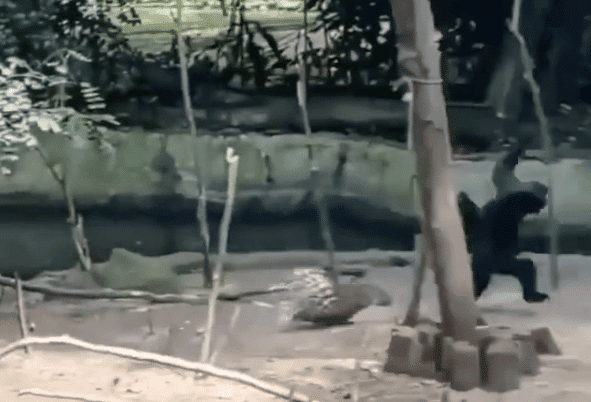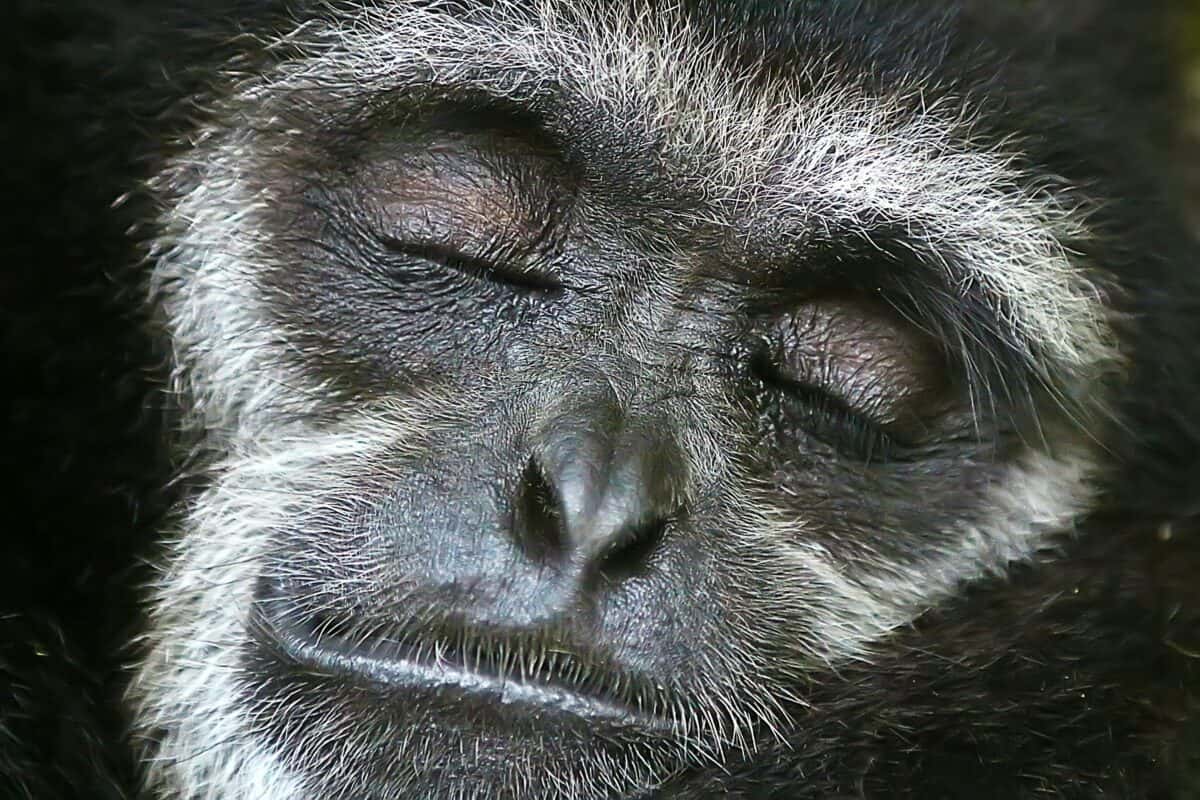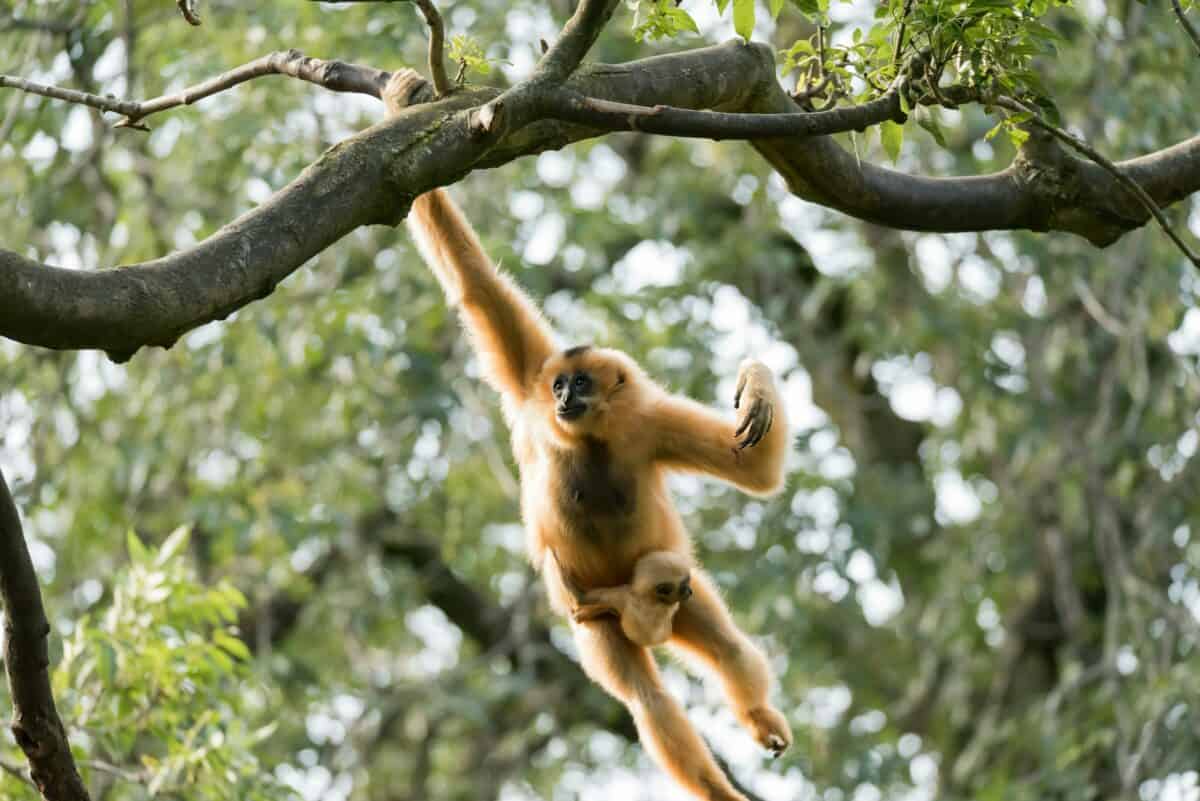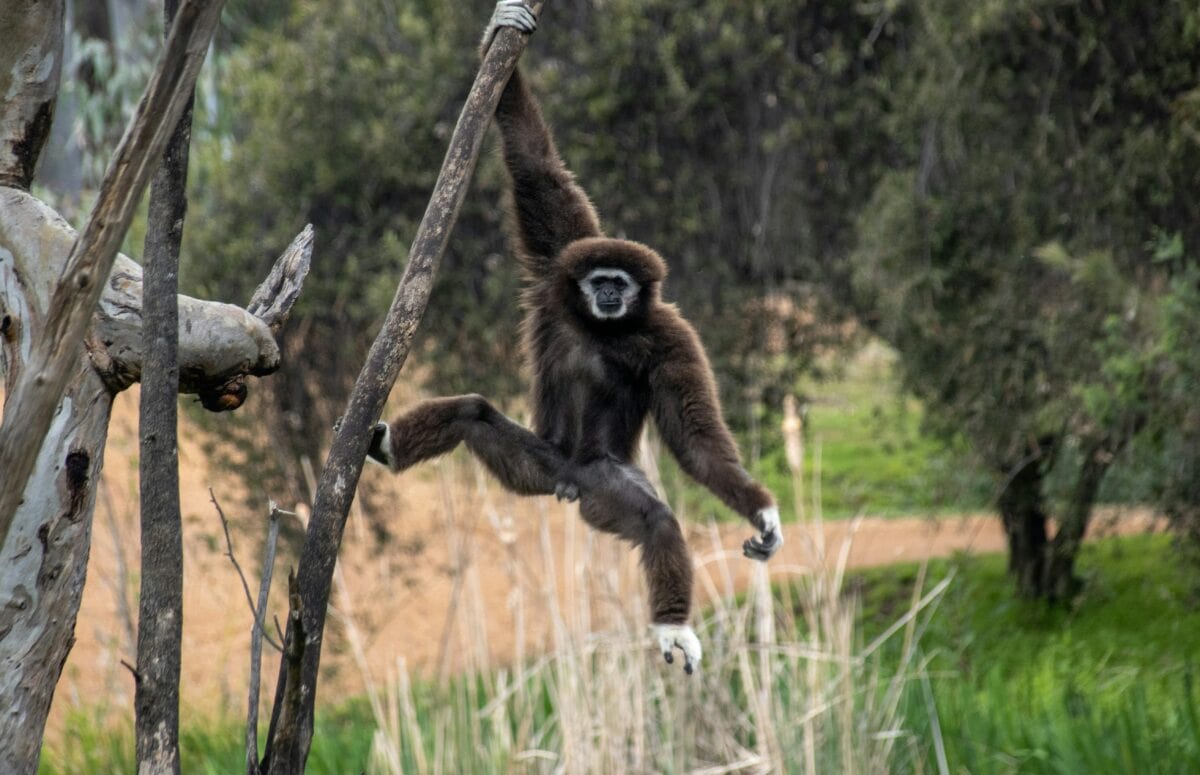Gibbons, the slender and agile primates, captivate us with their grace and the melodies of their morning songs. These fascinating creatures, often called “lesser apes,” hold secrets of the forest canopy, navigating the treetops with unparalleled skill. In this exploration, we’ll dive into the world of gibbons, understanding their life, habitat, and some amusing tales, including a curious incident involving a porcupine.
Gibbon Is Chased By A Porcupine

One curious tale involves a gibbon that got more than it bargained for after poking a porcupine.
The encounter, captured and shared on social media, shows the gibbon’s surprise as the porcupine, unamused by the intrusion, chases the primate.
This amusing moment highlights the gibbons’ inquisitive nature, always exploring their environment, sometimes leading to unexpected adventures.
The Life Of A Gibbon

Gibbons are known for their monogamous relationships, a rarity in the animal kingdom.
They form tight-knit family units, singing duets to strengthen bonds and mark their territory.
These songs can echo through the forest, a beautiful symphony at dawn.
With a lifespan of up to 40 years in the wild, gibbons weave a long narrative of family, survival, and agility.
Habitat And Conservation

Gibbons primarily dwell in the dense forests of Southeast Asia. They prefer the high canopy, rarely descending to the ground, making the forest’s upper layer their home.
Sadly, their habitats face threats from deforestation, poaching, and the illegal pet trade.
Conservation efforts are crucial to ensure these melodious acrobats continue to swing from tree to tree, free and wild.
Diet And Behaviour

These creatures are mainly frugivorous, feasting on various fruits, along with leaves, flowers, and occasionally insects.
Gibbons are diurnal, active during the day, and rest at night. Their day is filled with foraging, grooming each other, and playing, displaying their social and loving nature within their family units.
Acrobatic Skills

Gibbons are masters of brachiation, moving through the trees with swift, graceful swings from their long arms.
This mode of locomotion allows them to cover up to 15 meters in a single swing, making them the fastest and most agile of all tree-dwelling animals.
Watching a gibbon move through the forest is like witnessing a live performance full of fluid movements and breathtaking leaps.
Conclusion
Gibbons, with their enchanting songs and acrobatic prowess, remind us of the wonders hidden in the forest canopies.
Their lives, filled with joy, agility, and a bit of mischief, as seen in the playful encounter with a porcupine, captivate our hearts and underscore the importance of preserving their natural habitats.
As we learn more about these graceful primates, let us commit to protecting them and their forests, ensuring their songs continue to grace the morning air for generations to come.
To Read more stories like this, check out the articles below:
- Watch: Gibbons Hilariously Reacts to Hedgehog at Lake District Wildlife Park
- Watch as Gibbon Swings Over Family while Crossing a Bridge
- Gibbons Show Off Their Skills By Mimicking Sirens
Join our Forum for free today!

- Brown Bear Approaches And Wiggles His Foot - July 22, 2024
- Mountain Biker Has An Extremely Close-up Encounter With a Wild Giraffe - July 22, 2024
- Eagle Flies Into a Moving Car - July 21, 2024


